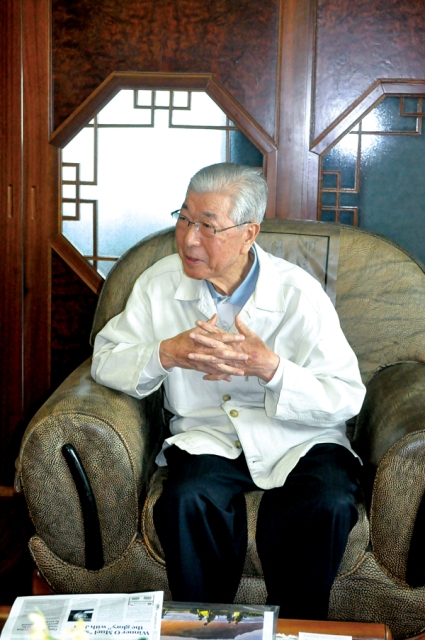| |
 |
|
| ▲ Hallim Park founder Song Bong-gyu recalls the hard labor that went into creating Hallim Park. Photo by Ko Eun Young |
“42 years ago, my parents and wife opposed it, asking why I was buying sand,” said Song Song Bong-gyu, Hallim Park chairman, as he reflects on his first efforts to turn Hallim Park from wasteland into the green paradise it is today.
The sand was transformed into Jeju's premier tourist attraction, with nine themed parks including Palm Tree Road, Jaeam Traditional Village, Hyeopjae· Ssangyong Cave, and the Stone and Bonsai Park. The park also boasts subtropical plants and hilly grassland, plus the 1 million tourists who visit every year.
Showing just how visionary Song was, Hallim Park was the first private tourist attraction on Jeju Island. He was first made aware of the opportunity while in Osaka at the World EXPO 1970, where he saw Sakaishi Palm Tree Street and Japanese traditional gardens.
He visited the event as the head of a provincial government consultation committee and decided to create an amusement park and palm tree road in his hometown upon returning.
Buying land was the first step and he found a piece of wasteland in Hyeopjae at auction. The land was bought with his father’s inheritance and was badly damaged by sea erosion and was mostly thornbush, rock and stone. There were no other bidders for the plot.
His family, relatives and people around him didn’t stop mocking him for what they thought was his foolish reclamation project. However, Song was committed and it became an adventure that took hold of his life.
With just a hoe and sickle, and by bearing rock loads on his back, Song planted seeds in the sand wasteland and step by step the park took shape. Using horse manure from the Isidore horse ranch 15 k.m. away, he crafted a fertile soil and planted 50 thousand seeds.
At that time, there were no roads or water supply, but he remembers that after planting the trees it rained.
“I am sure that someone is helping me,” he thought. “I liked the rainy days. I could rest with my legs outstretched.”
There was also crisis, however. “In 1983, when digging out the sand to connect Hyeopjae Cave to Ssangyong Cave, a house-sized rock fell from the cave roof. It was a relief that there were no workers there and it was night. If someone had been hurt or died, I could have given up building the park.”
One Chinese businessman, from the Yuhetian company, noticed Song’s hard work and gifted him the the statue of a woman carrying mulheobeok, a traditional water pot, that is now in the park. On the statue it says: “I hope this teaches everybody the spirit of Song Bong-Gyu, who devoted himself to building this beautiful ecological environment.”
Song retired at 70 years of age in 2001 and built the “Jaeam Culture Foundation.” Through this com-pany Song is giving back to the Jeju community a hundred mil-lion won a year through schol-arships for the development of human resources, culture and the arts.
He recently also donated 20 million won to the “Priest Mac-Grinch Commemorative Project” to make the Irish clergyman’s work for the poor and needy more widely known.
Hallim Park is now run by Song’s son as heir. Although he believes that tourism is the future for Jeju, he criticises the pattern of development. Referring to the much heralded “era of 10 million tourists,” he says:
“Is 10 million people coming to Jeju important? Although tourists come and spend their money, it should be worth it and they should also be satisfied.”
Hallim Park founder Song Bong-gyu recalls the hard labor that went into creating Hallim Park. Photo by Ko Eun Young
|




















